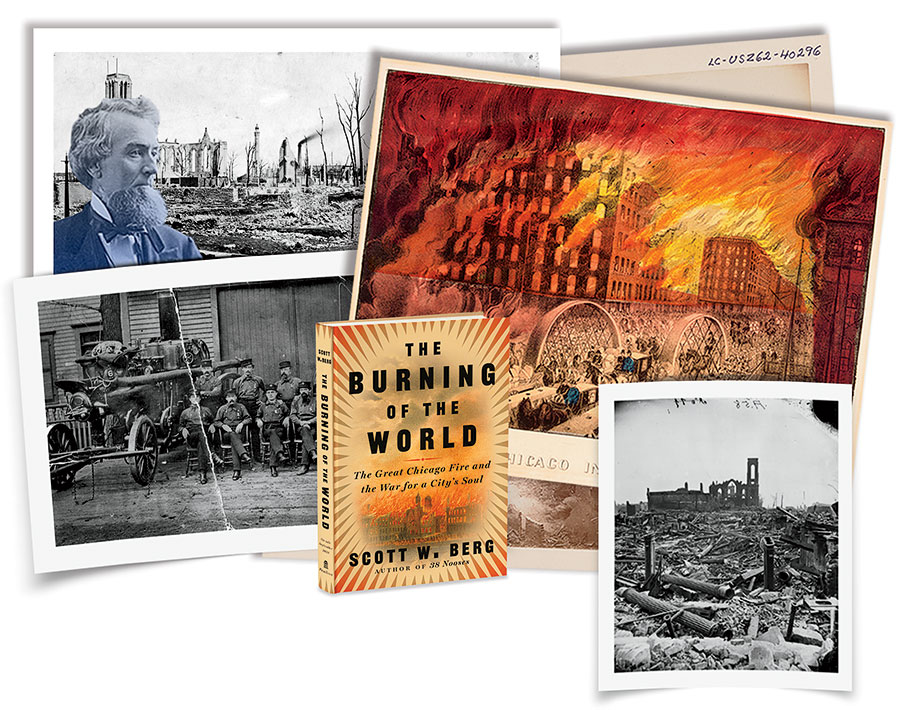1 The death toll may have been far higher than the city’s official tally of 293.
“A true count wasn’t possible,” Berg writes. Intense heat disintegrated bodies. And it was difficult to estimate how many people were missing because Chicago had 20,000 visitors a day, as well as many poorly documented immigrant and illiterate residents.
2 The city’s investigation of the fire was a sham.
Although the inquiry rightfully exonerated Kate Leary (the cow milker more famously known as Catherine O’Leary), the police and fire commissioners spent two weeks repeatedly (and leadingly) asking a string of witnesses whether, as Berg puts it, “the fire department had done the best it could.” Not surprisingly, the conclusion was yes.
3 The fire led to Chicago mayors having more power.
Before 1871, the job was “a ceremonial figurehead.” Elected a month after the fire, Chicago Tribune boss Joseph Medill (pictured) successfully pushed for changes in state law that gave mayors a line-item veto and the ability to nominate and fire nonelected officials such as the police superintendent and fire marshal.
4 The mayor’s effort to prohibit wood construction outraged immigrants.
Medill’s proposed building code angered Germans who couldn’t afford to rebuild with brick. With four months left in his term, Medill essentially abandoned his office, heading to Europe for a long vacation. In the next election, an immigrant coalition ousted “law-and-order” elites. The “surge of power and cohesion displayed by Chicago’s working class” was a significant piece of Medill’s legacy, Berg writes.
5 It took pressure from insurers to get Chicago to ban wood.
After another big fire swept across the South Loop in 1874, insurance companies raised premiums “so high that many of the homeowners and smaller businesses that surrounded downtown had no choice but to go elsewhere to rebuild.” Aldermen finally expanded the “fire limits,” where wood construction was outlawed, to encompass the whole city.



